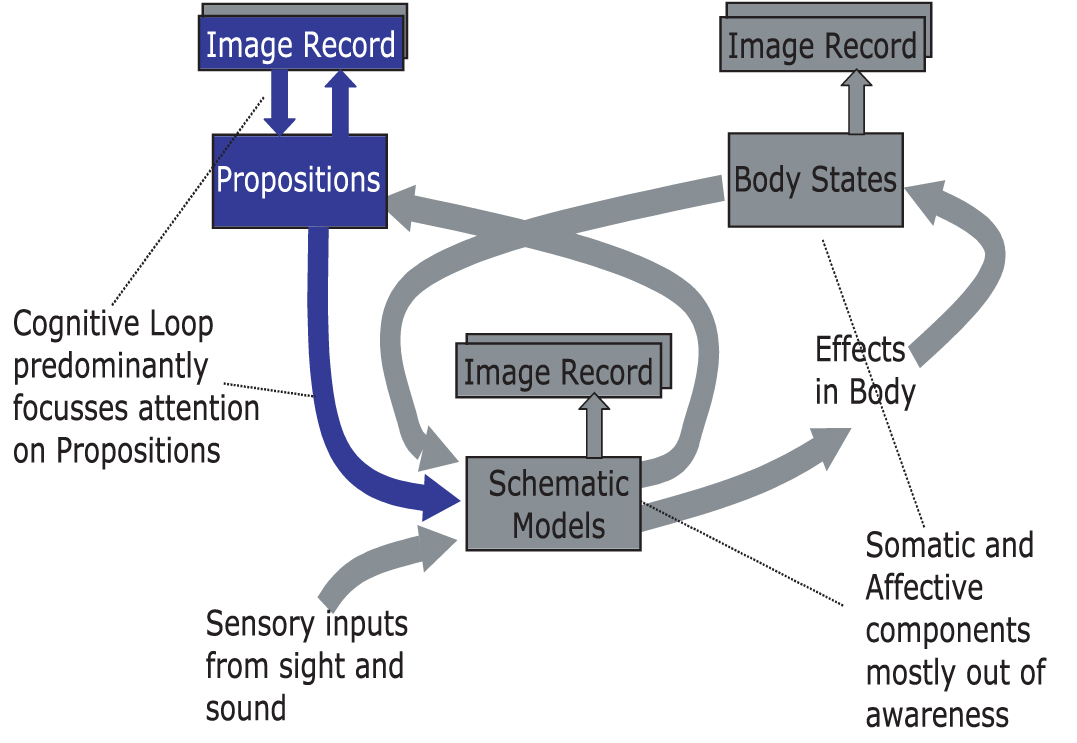Anorexia Nervosa
A novel process account
Anorexia Nervosa (AN) is currently extremely difficult to treat and is associated with a very high mortality rate. This situation is unlikely to change without developing a deeper understanding of the mechanisms maintaining AN. Based on a review of published articles, we have recently identified several clinical challenges posed by this condition and have developed a close cousin to the ICS model of depression that addresses the specific clinical challenges of AN. This work is a collaboration between Barney Dunn and Philip Barnard at the CBU and Rebecca Park from the Dept. of Psychiatry, University of Oxford.
Our account suggests that AN is maintained by interactions between extreme body-states and distinct emotional and intellectual levels of meaning. Recurrent ruminations focussed on the control of eating, weight and shape are continually regenerated, intensified by somatic starvation cues and eating and exercise behaviours. Attention is narrowly focussed on intellectual meaning, with reduced awareness of emotional meaning and body-states. This 'Anorexic Interlock' emerges from affect-related schematic mental models accessed in starvation, and the dynamic modes in which meanings and body-states are processed.

"Anorexic Interlock" dominates the experience of restrictive AN. It is sustained by constant compulsive activity (ruminations and preoccupations with planning, calorie counting, routines of exercise, eating and schedules). The individual is aware (blue process arrow) of preoccupations with food and eating control but remains distanced emotion and bodily experiences which remain outside focal awareness (grey boxes and arrows). Breaking out of this requires new configurations of processing (see poster reference below).
The work has been presented as posters at two conferences, the latest of which was
and the work is reported in two journal publications:
Park, R. J., Dunn, B.D., and Barnard, P.J. (2011) Schematic Models and Modes of Mind in Anorexia Nervosa: A Novel Process Account I. International Journal of Cognitive Therapy, 4(4), 415-437.
which covers the basic theory while its implications for treament are addressed in a companion paper:
Park, R. J., Dunn, B.D., and Barnard, P.J. (2012). Schematic Models and Modes of Mind in Anorexia Nervosa II: Implications for treatment and course. International Journal of Cognitive Therapy, 4(4), 415-437.

 MRC Cognition and Brain Sciences Unit
MRC Cognition and Brain Sciences Unit

